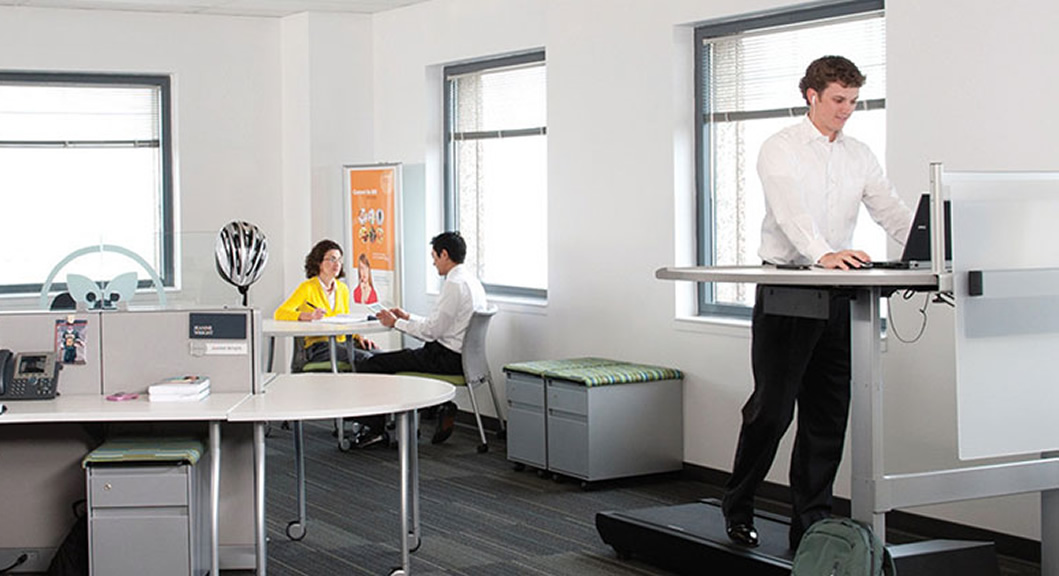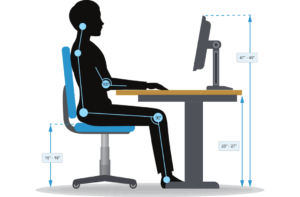The Role of Ergonomics in Creating Comfortable and Efficient Workplaces

In today’s fast-paced and competitive business environment, creating comfortable and efficient workplaces is essential for maintaining employee satisfaction, productivity, and overall well-being. One of the key factors influencing the design of such workplaces is ergonomics. Ergonomics, often referred to as human factors engineering, is the science of designing environments, products, and systems to fit the people who use them. In this article, we will explore the critical role that ergonomics plays in the creation of comfortable and efficient workplaces and how it benefits both employees and employers.
1. Understanding Ergonomics
Before diving into the role of ergonomics in workplace design, it’s essential to understand what ergonomics entails. Ergonomics focuses on optimizing the interaction between people and their work environment to enhance safety, comfort, and efficiency. It encompasses various factors, including physical, cognitive, and organizational ergonomics.
Physical ergonomics deals with the design of workspaces, equipment, and tools to minimize physical strain and prevent injuries such as musculoskeletal disorders. Cognitive ergonomics focuses on designing tasks, systems, and interfaces to support mental processes such as decision-making, problem-solving, and information processing. Organizational ergonomics addresses the overall structure and management of work systems to promote efficiency, teamwork, and employee well-being.
2. Designing Comfortable Workspaces

Ergonomics plays a crucial role in designing comfortable workspaces that support employee health and well-being. This includes factors such as workstation layout, seating arrangements, lighting, temperature, and noise levels.
For example, ergonomic workstation design considers the height and adjustability of desks and chairs to accommodate employees of different heights and body types. Proper lumbar support and ergonomic seating promote good posture and reduce the risk of back and neck pain. Adequate lighting, both natural and artificial, reduces eye strain and fatigue, while appropriate temperature and noise control contribute to a more comfortable working environment.
3. Enhancing Work Efficiency
In addition to promoting comfort and well-being, ergonomics also plays a significant role in enhancing work efficiency and productivity. By designing workspaces and processes that are tailored to the needs and capabilities of employees, ergonomics helps minimize unnecessary physical and cognitive strain, allowing workers to perform their tasks more effectively and efficiently.
For example, ergonomic workstation layouts optimize the placement of tools, equipment, and materials to reduce reaching, bending, and unnecessary movements. Ergonomically designed computer interfaces and software systems streamline tasks and minimize cognitive load, leading to faster and more accurate performance. Organizational ergonomics principles, such as effective communication, teamwork, and workload management, further enhance efficiency by promoting collaboration and coordination among team members.
4. Preventing Work-Related Injuries
Another critical aspect of ergonomics in creating comfortable and efficient workplaces is the prevention of work-related injuries and illnesses. Musculoskeletal disorders, such as carpal tunnel syndrome, tendonitis, and lower back pain, are prevalent among employees who perform repetitive or physically demanding tasks.
Ergonomics interventions, such as ergonomic workstation design, job rotation, training in proper lifting techniques, and the use of ergonomic tools and equipment, help reduce the risk of these injuries. By identifying and addressing ergonomic risk factors in the workplace, employers can create safer and healthier work environments for their employees, reducing absenteeism, turnover, and workers’ compensation costs.
5. Improving Employee Satisfaction and Retention

Finally, ergonomics contributes to employee satisfaction and retention by creating workplaces that support employee well-being, health, and productivity. When employees feel comfortable and supported in their work environment, they are more likely to be engaged, motivated, and satisfied with their jobs.
Ergonomics interventions, such as ergonomic workstation design, adjustable furniture, and ergonomic training programs, demonstrate to employees that their employer cares about their health and safety. This, in turn, fosters a positive work culture and enhances employee loyalty and retention.
In conclusion, ergonomics plays a critical role in creating comfortable and efficient workplaces that promote employee health, well-being, and productivity. By applying ergonomic principles to the design of workspaces, equipment, and processes, employers can create environments that support employees in performing their tasks safely, comfortably, and efficiently. Investing in ergonomics not only benefits employees by reducing the risk of work-related injuries and promoting overall well-being but also pays dividends for employers in terms of increased productivity, satisfaction, and retention.


